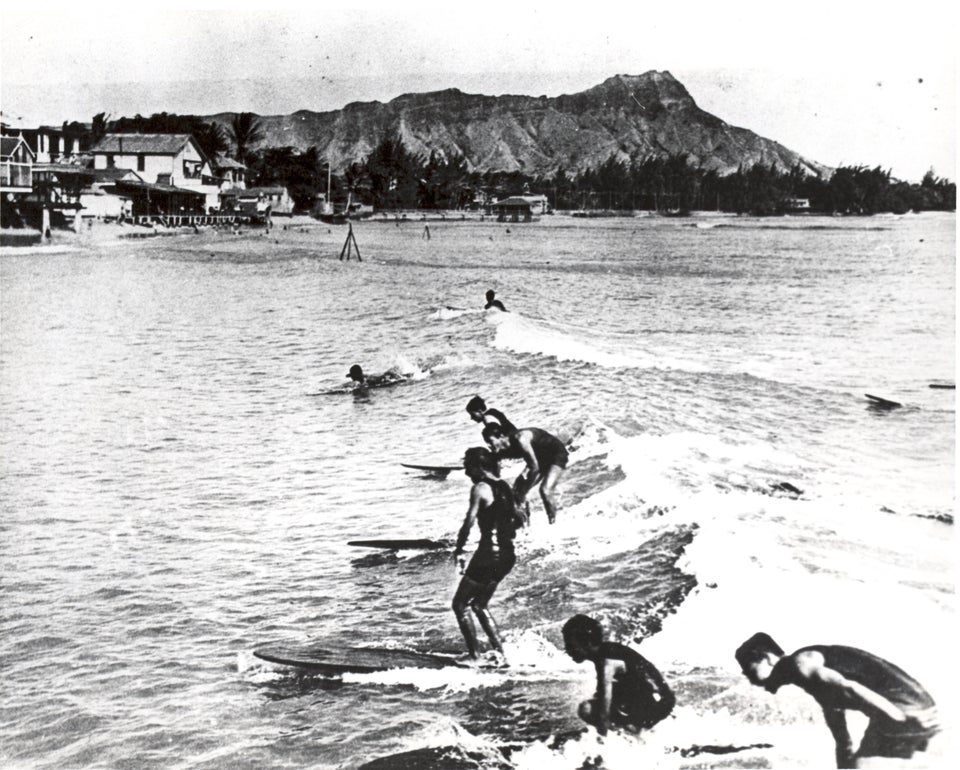The grass-skirted, bobbling dashboard decorations would have you believe that the Hawaiian art of hula dancing is decidedly feminine.
History would disagree.
In traditional Hawaiian culture, men and women alike participated in the dances, with the masculine aspects being equally celebrated and respected. The now pervasive stereotype that hula is a seductive, feminine dance emerged somewhere in the past two centuries, but thankfully, many modern Hawaiian men are getting back to their cultural roots and reclaiming hula.
"Hawaiian men are becoming more empowered to be proud of who they are," Snowbird Bento, a hula teacher, told the Hawaiian channel Oiwi TV. "Here is a group of people who are taking stereotypes head on and saying, 'No, we’re not going to be a stereotype -- we want to change that.'"
Native Hawaiians used hula as a ceremonial ritual and a form of communication to pass down stories from generation to generation. King Kalakaua famously proclaimed it "the language of the heart and therefore the heartbeat of the Hawaiian people."
But throughout the 19th and 20th centuries, the practice of hula has been suppressed several times due to western influences in Hawaii. First, missionaries in the islands discouraged the practice of hula, effectively banning it for religious reasons.
Then, decades later, when the United States annexed Hawaii in 1898, Hawaiian culture, and hula along with it, was again subdued in favor of more Western customs.
It wasn't until the Hawaiian renaissance of the 1970s that traditional hula became widespread once again -- among women, at least. A stigma had developed in conjunction with the westernization of modern Hawaii, reducing the numbers of men who danced hula.
It's difficult to understand why. Many forms of male hula are distinct from women's dances, since movements often mimic the Hawaiian martial art of "Lua."
According to the book Martial Arts of the World, "The importance of the hula was critical for developing Lua skills. Warriors were expected to practice the hula daily, not only as a form of exercise, but also for developing individual and group martial abilities."
Some male dancers also see hula as an opportunity to embrace a more feminine side of themselves. "In my eyes, in order to be a kāne [man], you have to have a strong balance of both sides," hula dancer Ka’aimalani Spencer told Oiwi TV. "You can have a strong masculinity, but at the same time you have to acknowledge your softer side."
Still, when Robert Cazimero, a legendary kumu hula (teacher), founded an all-male hula halau (troop) called Na Kamalei during the cultural revival of the '70s, he had only six dancers.
Cazimero has been working tirelessly ever since to reverse the stigma. His halau introduced a modernized image of the male hula dancer, bringing the grace and power of men's hula to center stage and, perhaps most importantly, instilling pride in its members.
In the past five years, Cazimero says he has more young dancers than he's had in at least 30 years.
"It’s becoming more comfortably status quo to be Hawaiian ... to like being Hawaiian ... to love our culture," he told The Huffington Post. The art of hula is benefiting from this renewed pride.
"I think that in this new generation of young people here in the islands -- I call them the 'Generation Fearless' -- I think that they are grasping and holding on tighter to things of our culture that are very important to us in all different facets," Cazimero said. "I’m really glad that hula is one of them."

Also on HuffPost:

